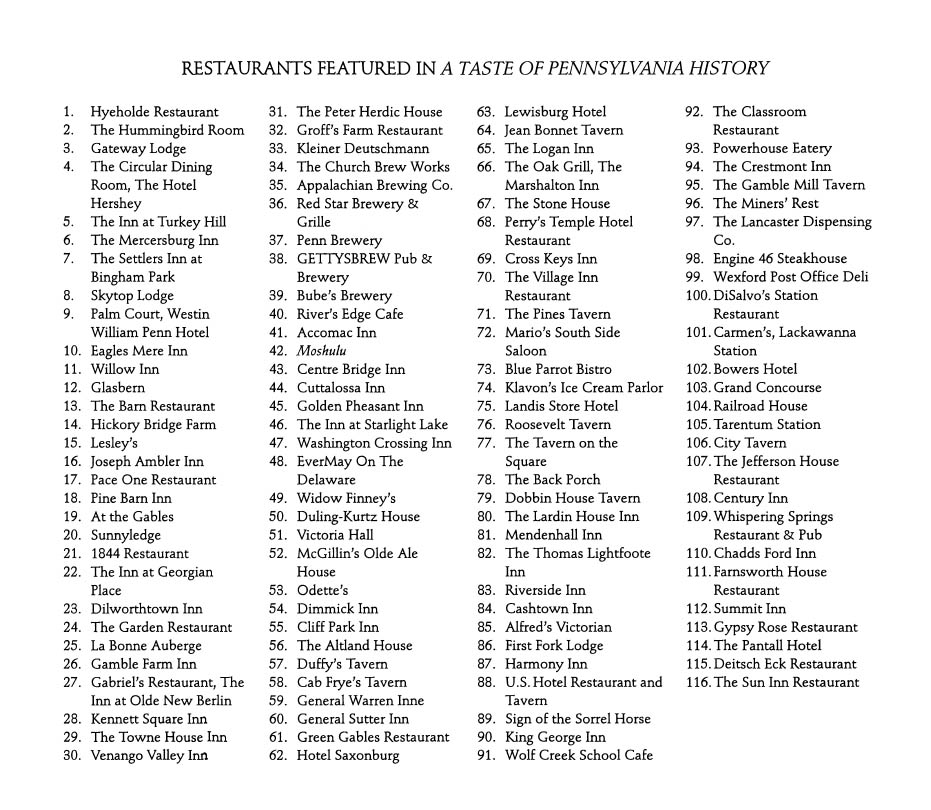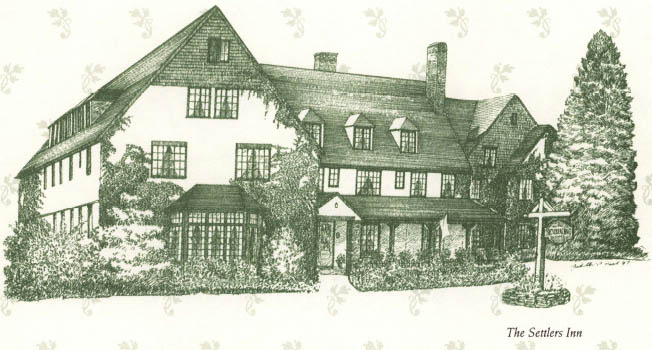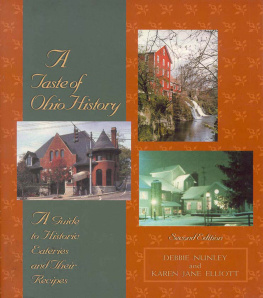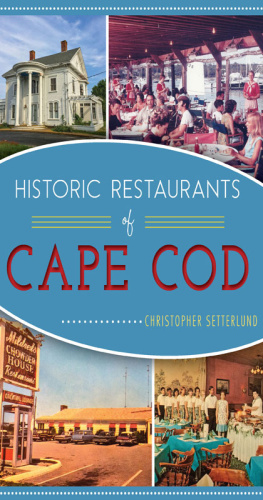A Taste of Pennsylvania History




John F. Blair, Publisher
Winston-Salem
North Carolina

Copyright 2000 by Debbie Nunley and Karen Jane Elliott
All rights reserved under International and Pan American Copyright Conventions
Published by John F. Blair, Publisher
Printed in Canada
The paper in this book meets the guidelines
for permanence and durability of the
Committee on Production Guidelines for
Book Longevity of the Council on Library Resources.
ON THE FRONT COVER, CLOCKWISE FROM THE TOP
The Settlers Inn at Bingham Park in Hawley, Hyeholde Restaurant in Moon Township Gabriels Restaurant at The Inn at Olde New Berlin in New Berlin
Library of Congress Cataloging-in-Publication Data
Nunley, Debbie.
A taste of Pennsylvania history : a guide to historic eateries and their recipes / Debbie Nunley & Karen Jane Elliott.
p. cm.
ISBN 0-89587-193-9 (alk. paper)
1. Cookery. 2. RestaurantsPennsylvaniaGuidebooks. 3. Historic buildingsPennsylvania. I. Elliott, Karen Jane, 1958- II. Title.
TX714.N86 2000
641.509748dc21 00-039763
Design by Debra Long Hampton
Composition by The Roberts Group
To our families,
without whose support and patient understanding
this hook would not have been possible

Contents



We have been collaborating on activities since 1994. Originally, it was at elementary school, but now that our children are older, we have broadened our horizons. We have always shared the common interest of dining at unusual places and now are part of a ladies group that meets once a month for the express purpose of seeking out unique dining experiences.
In our quest for new and different restaurants, we found a plethora of interesting places to suit our palate, our sense of adventure, and our historic curiosity. We so relished our discoveries that we wanted to share the joy. It occurred to us at the time that there was a book amongst all this research.
The dining establishments of primary interest to us fall into two categories. The first of these encompasses inns, taverns, and roadside hostelries that have been in business in the same locale for a considerable length of time. To be considered for this book, they needed to be of significant historic interest with respect to the location of the buildings, the memorabilia contained as part of the internal or external decor, or the cuisine served on a regular basis. The second type encompasses eateries housed in historic locations where elements of the buildings original use are now part of the decor. Schoolhouses, train stations, and stores are examples of this type.
In trying to determine which restaurants to visit, we read everything we could obtain. We contacted county tourism offices for recommendations, cross-checked our information with county historical societies, and scoured local magazines and newspapers. We asked restaurant owners whom we had already met for their further recommendations. Finally, we surfed the Net in search of answers. As we made slow but steady progress, we discovered that everyone who was old enough to talk had an opinion about where we should visit.
In the process, we researched close to 900 establishments. Many of these, although old, had not maintained their historic integrity. In other cases, we approached a restaurant, slowed, and, after getting a full view, quickly pulled away. If we werent prepared to go in, we certainly couldnt recommend it to our readers, regardless of how historic the building. Concerned about adequately representing the range of dining establishments across the 66 counties and 11 million people that make up the commonwealth of Pennsylvania, we narrowed the field to about 250 and made arrangements to dine.
Our favorite parts of the research were visiting the establishments, talking with the owners, the chefs, and the staff, tasting the food, enjoying the ambiance, selecting the recipes, and finally deciding which restaurants to include. We had a wonderful time from start to finish in choosing the 116 presented here.
The restaurants are organized into chapters based on common characteristics. Within each chapter, the restaurants are arranged in the order we visited them. We racked our brains for weeks to come up with catchy chapter titles. One of the most surprising chapters is the one called Let Freedom Ring. When we started our research, neither of us anticipated finding so many links to the Underground Railroad.
Pen-and-ink drawings are traditional in books of this type for other states. Not wanting to break completely with tradition, weve introduced each chapter with a drawing of one of the establishments within. We thought it would create variety within the text if we used each restaurants logo as the heading for its historic write-up. The variety and creativity of these was a pleasant surprise.
In just a shade over a year, weve gained an incredible amount of knowledge about a state in which neither of us was born. Weve come across many delightful individuals who have generously shared their time and information. The stories they told us about their establishments are not only interesting but heartwarming as well. We hope that you enjoy this book as much as we have in putting it together!


Out of a misty dream, our path emerges for a while, Ernest Dowson wrote. In the case of the establishments in this chapter, that dreamy path leads directly to a wonderful dining experience. The dream may be related to the way the restaurant was started, out of someones lifelong yearning, or it might refer to the effect on each of us as we visit. Go and see if you experience a dream come true.
CORAOPOLIS HEIGHTS ROAD
MOON TOWNSHIP, PA 15108
412-264-3116
As they were standing at the crest of a cornfield, William Kryskill told his bride, Clara, that he would someday build her a castle. That cornfield became the grounds of the castle called Hyeholde.
Work on Hyeholde began in 1931. The intent was to construct the building for use as a restaurant and living quarters. Over the next seven years, Bill and Clara spent the summer months operating Clark Studio Tea Room in Noank, Connecticut. Every September, they returned to the cornfield outside Pittsburgh to continue construction on their labor of love. Many of the beautiful materials used throughout the restaurant came from the old Stonesifer barn, which was located in what is now Robinson Township. The Kryskills carefully dismantled the barn and its stone foundation, reviving the materials as they created Hyeholde.
Next page















